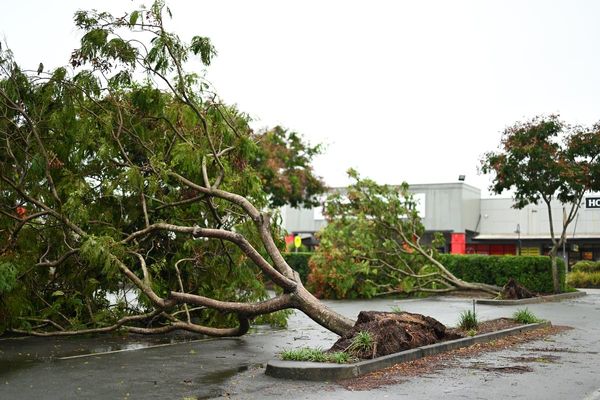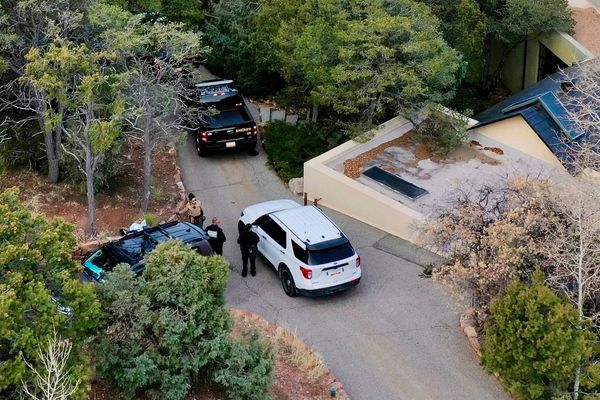Quiet electric trucks could transform how cities operate — but only if regulation keeps up with emerging technology.
Currently diesel trucks are subject to urban curfews, set by states or local councils, to limit noise pollution at night on residential streets.
Electric truck manufacturer SEA Electric's Asia Pacific vice-president Glen Walker said if electric trucks were exempt, more businesses would be adding them to their fleets.
"In the context of trucks rumbling past houses, waking people up, an electric vehicle wouldn't do that," he said.
"You notice the wind noise past the side-view mirror. You notice a squeak in a seat.
"There's an opportunity for silent delivery of freight of an evening."
Mr Walker said it would also make it cheaper for running costs for EV fleets, which could charge during the day using solar.
"There's little things like that, that could help us make the technology a little bit more mainstream," he said.
Volvo's e-mobility solutions manager Tim Camilleri agreed that electric trucks could transform how cities operate.
"It would be a win-win," he said.
"We don't have to build more roads and we get less congestion during the day."
The uptake of electric trucks has been minimal in Australia, with a number of regulations either holding the industry back, or needed to encourage their uptake.
Zero-emission trucks make up just 0.5 per cent of new sales in Queensland, the Queensland Transport and Logistics Council reported this year.
SEA Electric this year sold 100 rigid trucks (like garbage or refrigerated trucks, tippers and shuttle buses). Volvo sold 10, with another 80 on order.
Meanwhile, there are no electric heavy duty, long-haul trucks in Australia. But that is about to change.
Volvo has two demo prime movers on a boat to Australia, but the catch is, under current regulations, they can't be driven on the country's roads, without applying for exemptions for the specific routes they would take.
Mr Camilleri said they would be able to travel 300 kilometres and carry 44 tonnes, but they would have more than 6.5 tonnes of weight on their front axle, which is more than is allowed under Australian Design Requirements.
In Europe, Mr Camilleri said up to 10 tonnes was allowed on that front axle for the same vehicle.
"We've got demo vehicles on boats that we can't drive," he said.
"It's coming more and more pertinent that we need to have an avenue to at least test vehicles, let alone sell them, and enable the industry to grow into this space.
"You can't go electric to carry less payload. You're getting hit twice with the impacts there."
Mr Camilleri said they decided to import the trucks in the hope the federal government changed the weight and width limits to accommodate electric batteries.
"It is a leap of faith," he said.
"We're fulfilling, on our side, our strategic journey … to push the Earth to have these zero-emission vehicles on the road."
Federal government says reducing emissions 'critical'
The federal government has released a consultation paper for its National Electric Vehicle Strategy, with submissions closing at the end of October.
Transport is the second-largest source of emissions in Australia, and the federal government's consultation paper says reducing those emissions would be "critical" to achieving its lagging emission targets.
It acknowledges that the switch to electric in the medium rigid delivery truck sector, that could use back-to-base style trips for recharging, would be easier compared to larger long-haul trucks.
For them, it's suggesting a move to transition fuels, such as new biodiesel, as they will take longer to commercialise.
E-mobility research fellow at the University of Queensland, Dia Smith, said the focus had so far been on passenger cars and "not much has been done to decarbonise the road freight".
She said road freight vehicles accounted for 38 per cent of transport emissions.
"We can't achieve net-zero if we just decarbonise passenger transport," she said.
She said there were "several barriers" to achieving net-zero in road freight, including a lack of choice, up-front costs, and quick charging stations for trucks travelling long distances.
Meeting emission targets
While Volvo plans to manufacture only electric cars by 2030, Mr Camilleri said their targets for trucks were more modest.
It wants to have 50 per cent of all trucks sold in Australia in a year to be electric by 2040, which would be about 1,500.
It also plans to begin manufacturing them at Wacol, in Brisbane's south-west, from between 2025 and 2027.
SEA Electric's Mr Walker said each year 20,000 new rigid trucks were bought in Australia, mostly in the capitals or in cities with 100,000 people or more.
Hypothetically, he said between 75 to 80 per cent of them could be electric.
"The number of quotations we have out is insanely high and the conversion rate to sales is creeping up and up and up with each passing month," he said.
"Everyone wants to touch one, drive one, test one.
"It's very much a snowball effect, the more competition in the marketplace, the better we all are, because we're selling against each other, which makes each other better."
Cheaper to run EVs on freight routes
Dr Smith said the up-front outlay was a massive barrier for the industry, with electric trucks sometimes costing double or triple that of a combustion engine model.
However, Dr Smith's research found that over time they made up their initial cost.
She ran a feasibility assessment in late 2021 comparing the affordability operational feasibility of trucks which ran on battery electric, advanced biofuel, hydrogen fuel cell and diesel.
They selected popular routes across different geographic locations, climatic conditions, terrain, and distance.
Dr Smith said they found it was better to run an electric truck over a number of the routes when looking at the total cost of ownership, which takes in the initial price as well as running costs over its lifetime.
For example, a report this year by the Electric Vehicle Council estimated that it costs about $117 to fuel a diesel truck for 300 kilometres, but just $18 for an electric truck.
"For a significant number and range of routes, battery electric trucks would likely be a suitable, operationally feasible, and cheapest [based on total cost of ownership] zero-emission technology for deployment today," Dr Smith said.
Electric trucks going the distance
The path to decarbonising the freight industry is not so straightforward for the long-haul industry.
The RACQ has argued that ethanol range extenders could be the key for drive trains over long distances.
It made a submission to the National Electric Vehicle Strategy recommending funding for the extenders' research and development as well as a biofuel electrification strategy.
RACQ's head of public policy Michael Kane said the range extenders were yet to be applied to freight in a large way, nor in a way that was relevant for Australia's landscape.
The extenders could be built into the chassis of an electric long-haul truck and would kick in when the electric battery was low, running on E85 or E100, which would have less emissions compared to diesel.
"We can shift that with electrification and the use of biofuels to effectively 100 per cent Australian or 100 per cent Queensland," he said.
"Then it also provides a more secure energy system because we're not relying on imports, which are tenuous in a crisis."
Mr Kane said long-haul trucks with the ethanol range extender would also be able to help provide electricity to communities in times of natural disasters.
He said the extenders could be used as an onboard generator, similar to what was seen in the snowstorms in Texas in the United States last year.
For example, if a community centre had a two-way charger, then the drive train could plug in to power up the site.
"If you don't have research and development, basically you're just technology takers … from northern Europe, northern America and north Asia," he said.
"We've got to stop looking at it from receiving the technology and we've got to start looking at it as, 'well what works for us in our technology?'"







